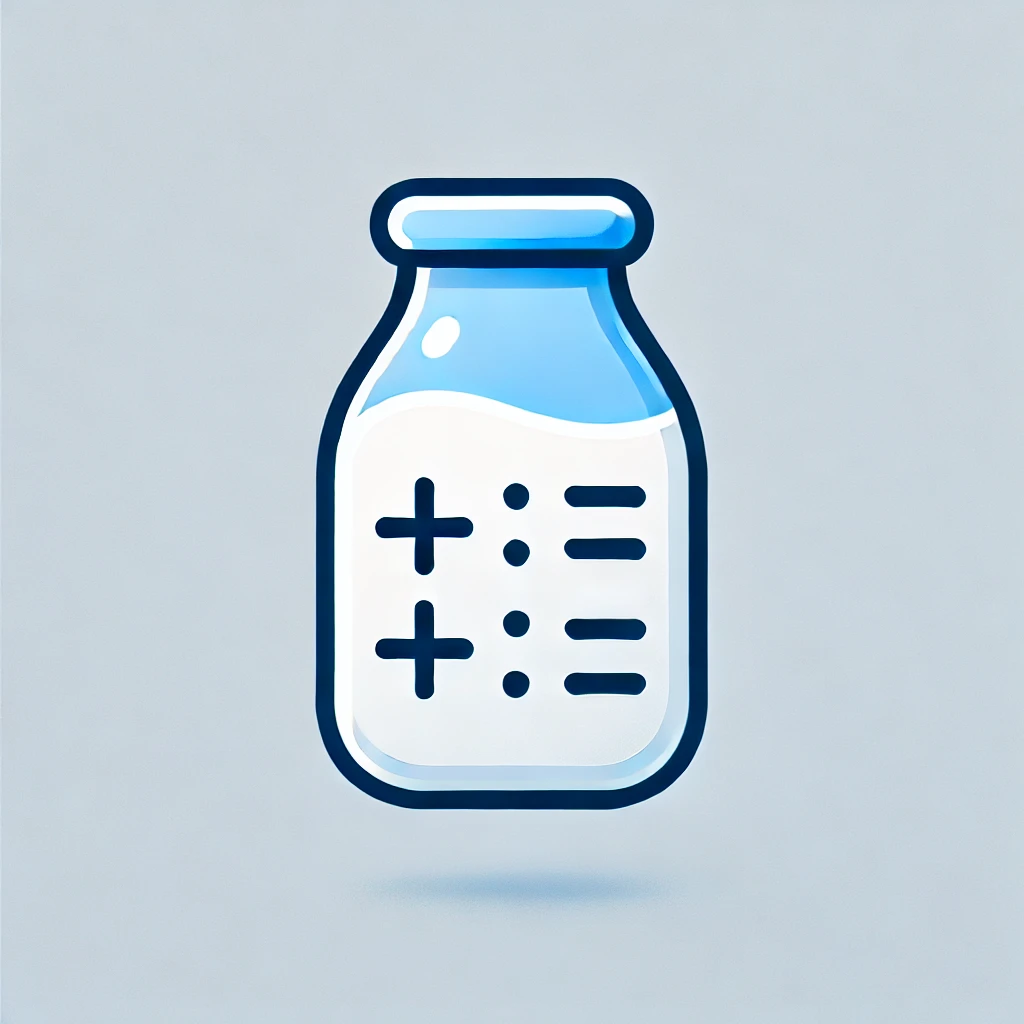Baby Milk Intake Calculator
Calculate your baby's ideal milk intake based on weight, age, and developmental stage. Perfect for newborns to 12-month-olds.
Daily Requirement
0 - 0 ounces (oz)
or0 - 0 milliliters (ml)
Per Feeding
0 - 0 ounces (oz)
or0 - 0 milliliters (ml)
Recommendations
Why Choose Milk Calculator?
Trusted by 150,000+ parents and recommended by pediatric nutritionists
Privacy First
- Zero data collection
- No tracking cookies
- Instant calculations (no sign-up)
Expert-Validated
- WHO growth standards
- AAP feeding guidelines
- Daily updated algorithms
Advanced Calculations
- Dual unit system (lbs/kg)
- Age-specific ranges
- Feeding frequency analysis
Parent-Centric Design
- Mobile-optimized
- Sleep-deprived parent friendly
- Multilingual support
100% Free Forever
No hidden costs or premium tiers - we believe in accessible parenting resources
Instant Results
Get personalized recommendations in under 10 seconds, no personal info required
How to Calculate Milk Requirements
Get accurate results in 4 simple steps
Enter Weight Details
- Choose between pounds/ounces or kilograms
- Input accurate measurement
- Automatic unit conversion

Specify Age and Gender
- Select months (0-12) from dropdown
- Choose additional weeks (0-3)
- Select biological gender

Set Feeding Frequency
- Enter daily feedings
- See age-based recommendations
- Adjust based on baby's routine

Analyze Results
- View daily and per-feed amounts
- Check professional recommendations
- Print or save results

Safe and Private Calculations
All calculations are done in your browser - no data stored or transmitted
Pro Tip
For most accurate results, weigh your baby without heavy clothing
About Baby Milk Intake Calculator
A Baby Milk Intake Calculator is an online free tool developed for parents and caregivers to know the amount of milk their baby needs daily based on their baby’s age, weight, gender, and feeding frequency.
Key Features
- Personalized Inputs:
- Weight: Accepts pounds/ounces or kilograms to account for global users.
- Age: Break down age into months (0–12) and weeks (0–3) for precision.
- Gender: Adjusts for slight biological differences in growth rates.
- Feeding Frequency: Recommends how often to feed based on age.
- Safety & Privacy:
- No data stored—calculations occur directly in your browser.
- Ad-free and free to use, with no tracking or cookies.
Why Use It?
- Precision: Provides milliliter-perfect recommendations to avoid overfeeding or underfeeding.
- Confidence: Reduces parental anxiety by replacing guesswork with data-driven results.
- Flexibility: Adjusts for special scenarios like cluster feeding.
How It Works
The calculator calculates daily milk needs using a weight-based formula:
Daily Milk (ml)=Weight (kg)×Age-Specific Range (ml/kg/day)
Example: A 3-month-old baby weighing 6 kg (13.2 lbs.) requires 150–180 ml/kg/day:
6 kg×150 ml=900 ml/day (minimum)
6 kg×180 ml=1,080 ml/day (maximum)
This range is then divided by the number of daily feeds (e.g., 8 feeds = 112–135 ml per feeding).
Age-Based Guidelines:
- Newborns (0–2 weeks):
- Start with 15–30 mL (0.5–1 oz)per feeding, increasing gradually as stomach capacity grows.
- By day 3–7, intake may reach 30–60 mL (1–2 oz)every 2–3 hours.
- 1–6 Months:
- 90–150 mL (3–5 oz)per feeding, increasing to 120–210 mL (4–7 oz) by 4–6 months.
- Feedings typically every 3–4 hours.
Rule of Thumb for Formula-Fed Babies:
- 5 ounces (75 mL) per pound (0.45 kg) of body weight daily.
- Example: A 10 lbs. (4.5 kg) baby needs about 25 oz (740 mL) daily.
Who Benefits?
- New Parents: Simplifies the transition to feeding routines.
- Caregivers: Ensures consistency across multiple caregivers.
- Pediatricians: Validates growth patterns during check-ups.
Responsive Feeding Cues
- Hunger Signs:Rooting, sucking hands, fussing.
- Fullness Cues:Turning away, relaxed hands, slowing sucking.
- Adjust amounts based on cues, even if they deviate from calculations.
Traditional vs. Modern Methods
| Traditional Approach | Calculator Advantage |
| Generic guidelines (e.g., "2.5 oz per pound") | Personalized for age, weight, and gender |
| Manual math and guesswork | Instant, error-free calculations |
| One-size-fits-all advice | Adapts to growth phases and feeding styles |
Special Considerations:
- Breastfed Babies:Focus on feeding frequency (8–12 times daily) and latch quality. Volumes are harder to measure but trust the baby’s cues.
- Preterm/Medical Needs:Follow healthcare provider guidance for tailored plans.
- Solids After 6 Months:Milk intake may decrease gradually, but remains primary nutrition until age 1.
Consult a pediatrician:
- Always validate feeding plans with a healthcare provider, especially for concerns about growth or digestion.